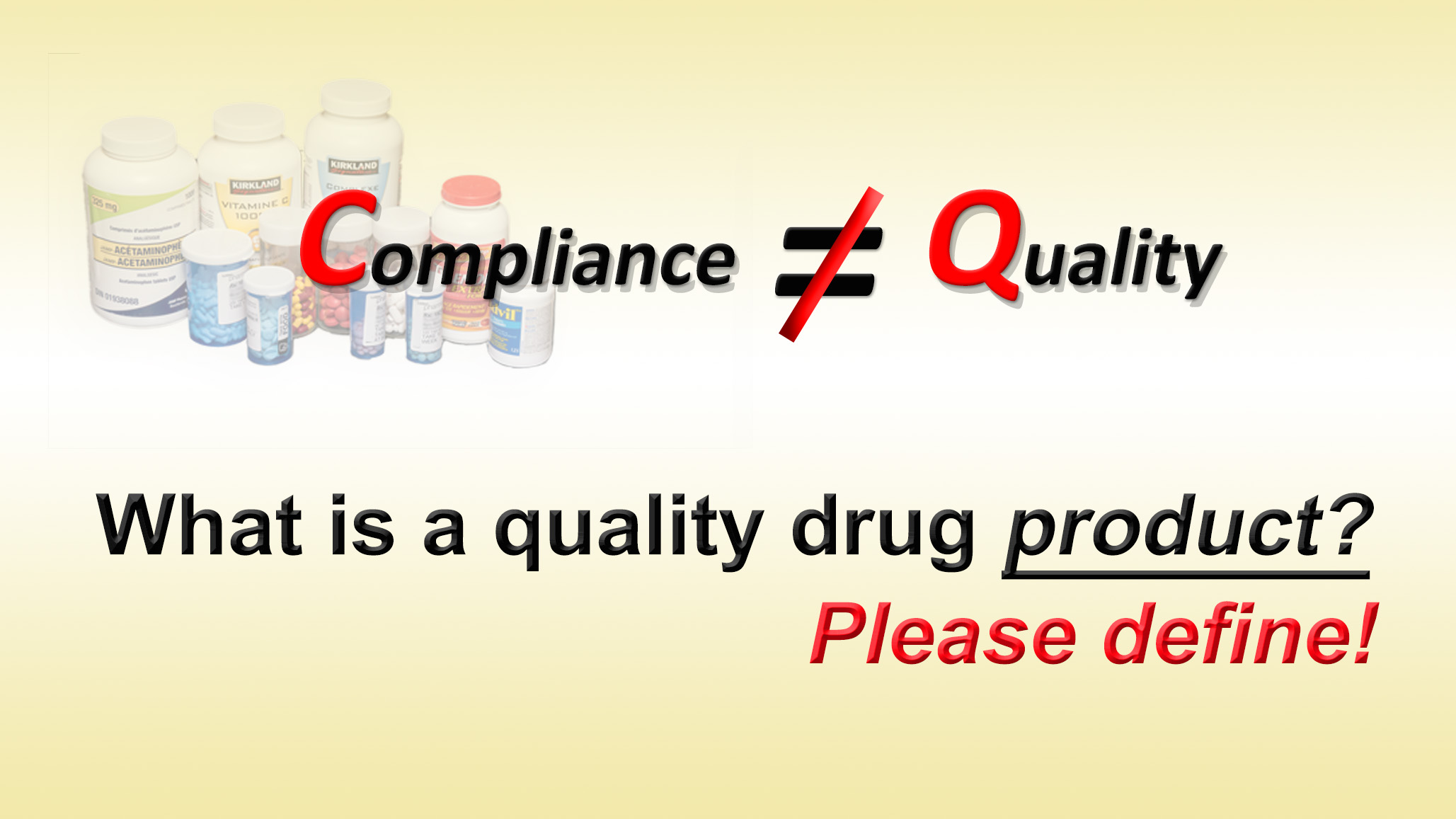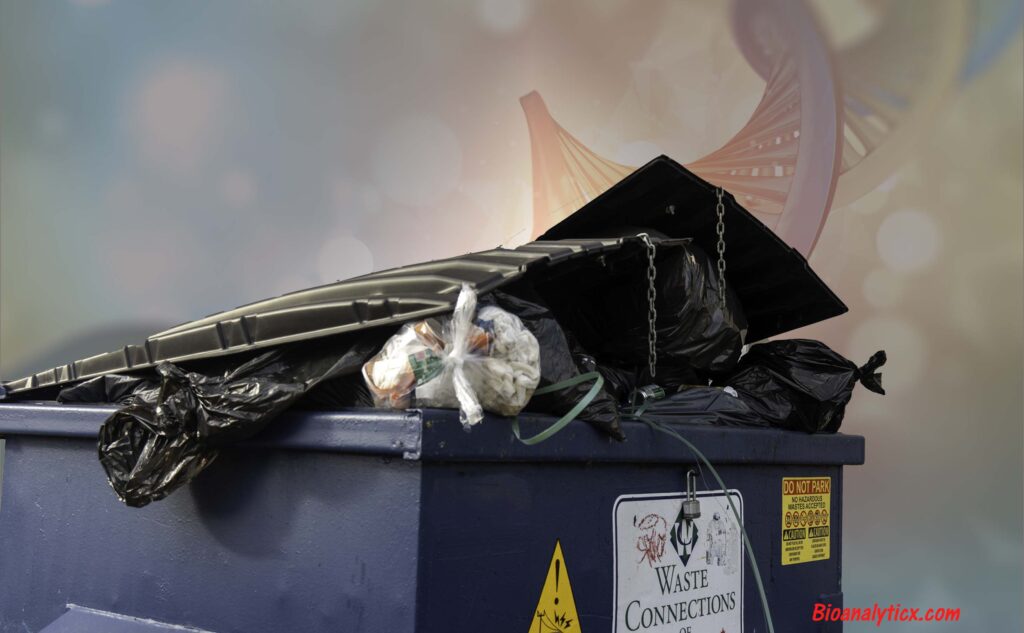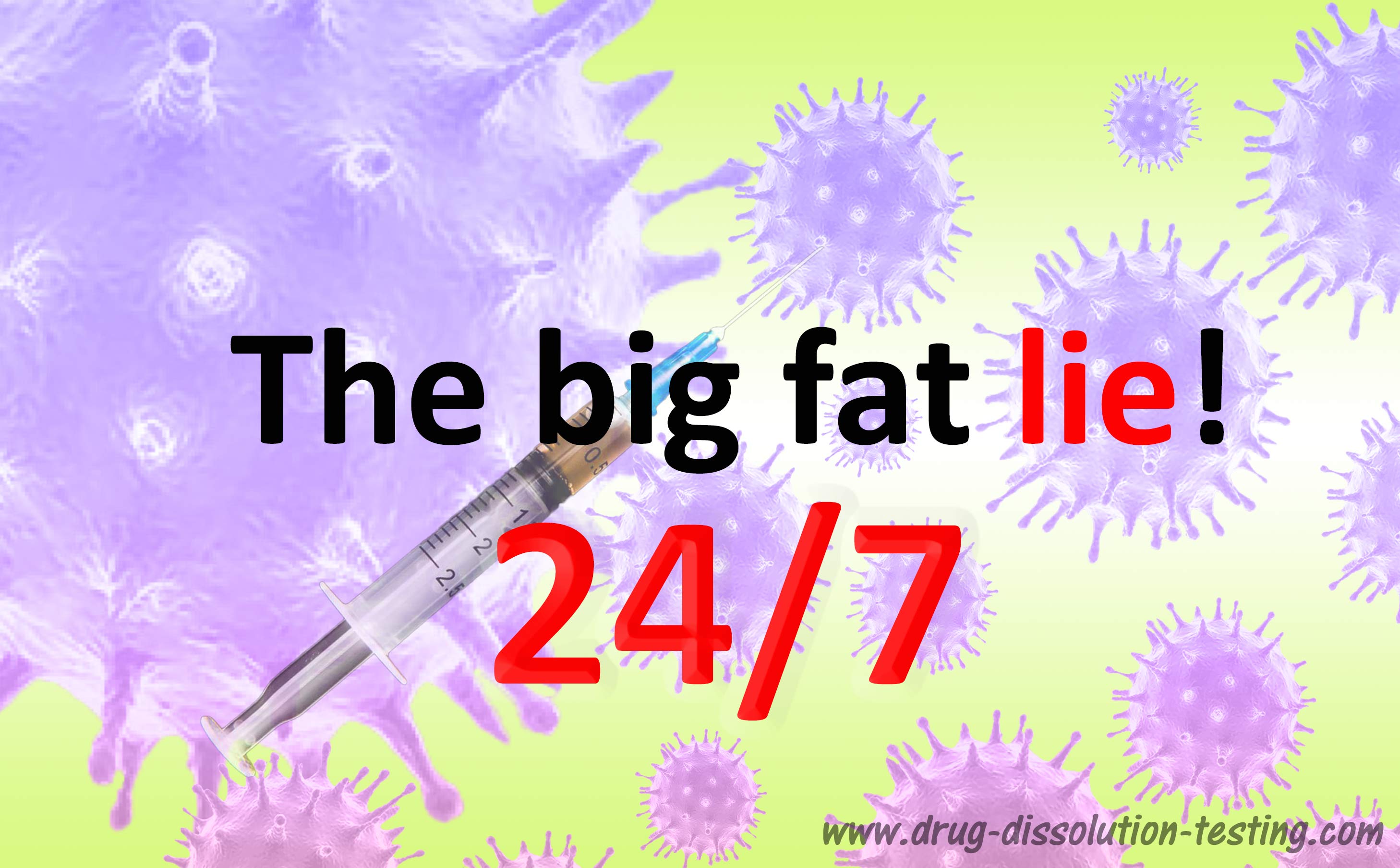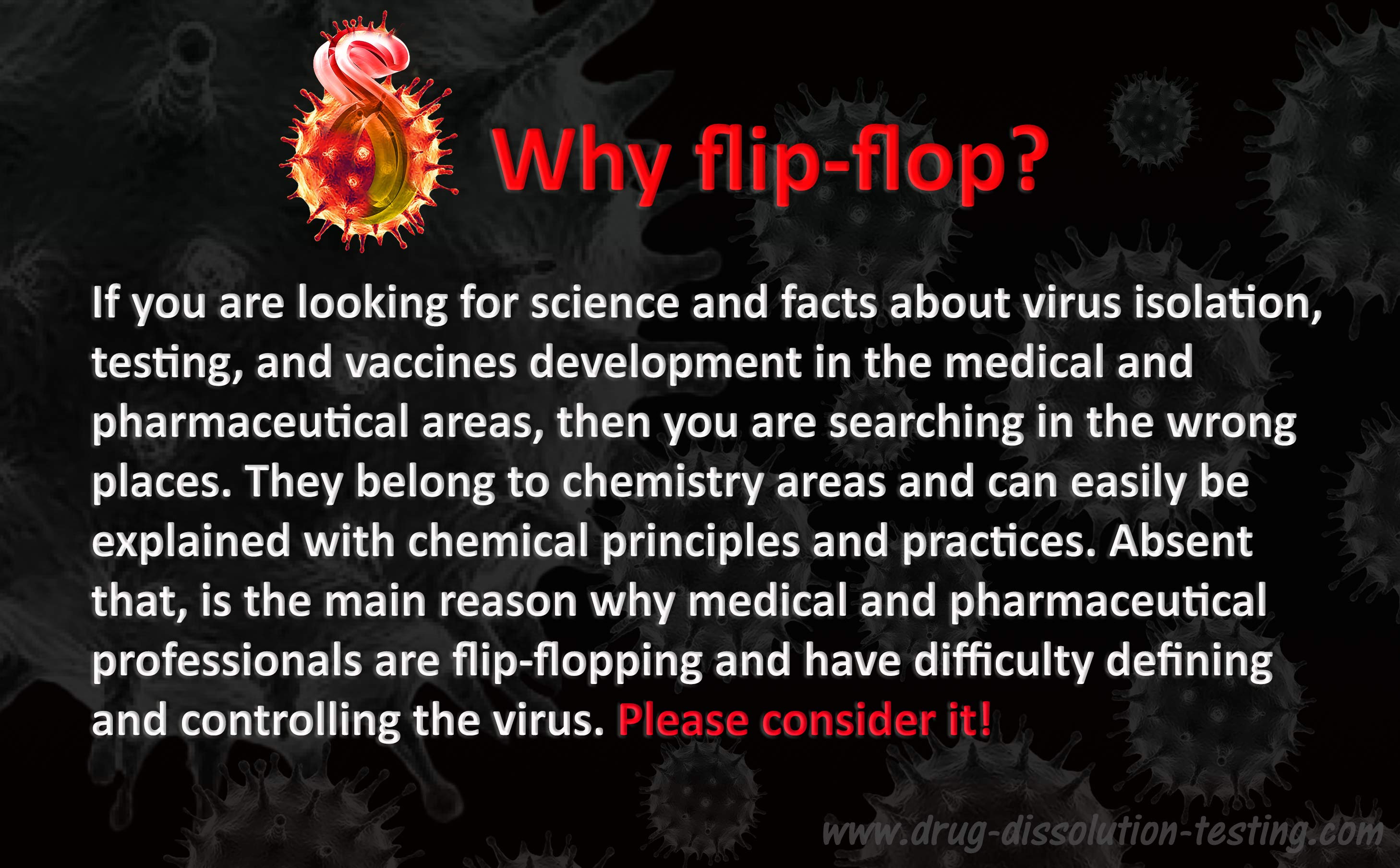
Search Results for: quantifiable

People try to understand the logic and scientific principles behind the (pharmacopeial and regulatory) “compliance” requirements for meeting the quality aspect of the pharmaceutical products such as tablets/capsules. However, there is hardly any scientific principle involved in most of the area’s current “compliance” requirements. Most compliance requirements are based on subjective (individual or collective) opinions and guesses, often presented through publications or regulatory guidance documents to gain or establish their authenticity. For example, in establishing the quality of the manufactured products, such as tablets/capsules of both generic and branded products, nowhere is defined what would be considered a “quality product” and how the quality should be measured or established. However, all the pharmacopeial and regulatory requirements (national or international) claim to achieve it. Is it not interesting that the quality of a product is not defined or known but claimed to be achieved? How?

People do not realize that it is not only COVID-19/Ivermectin, as an example of so-called clinical trials, but most, if not all, will be shown to be invalid. As I have explained several times, the reason is that clinical trials are a specific type of analytical (chemistry) test. Unfortunately, these tests/trials are done and promoted fraudulently as valid and scientific. Proper analytical tests require precise and quantifiable outcomes (endpoints) using VALIDATED analytical tests/methods.
In the case of current practices of clinical trials, there is no such thing – neither an objective and qualifiable endpoint (but mostly subjective symptoms or arbitrary markers) nor validated tests (but non-validated and irrelevant tests such as PCR, drug dissolution). Hence, a valid clinical or scientific trial cannot be conducted, particularly under the guidance of medical experts and related regulatory authorities who lack the necessary training and understanding of the subject/testing.
Do not forget the disastrous failure of the clinical trials and the vaccine development for COVID-19. The catastrophic outcome of the vaccine was accurately predicted based on the understanding of flawed PCR tests and the analytical or scientific aspects of clinical trials (link, link, link, and much more at Bioanalyticx.com).
Further information may be found here: Helpful Notes and the Book by the author (Dr. Qureshi), who worked at Health Canada as a Research Scientist and had 35+ years of bench science experience in substance isolation, characterization, and analytical testing, among other specialties.

People, including mainstream “scientists” and “experts,” do not realize that vaccines, mRNA-based or otherwise, have never been tested for their efficacy. To test the efficacy for developing and testing the vaccines, the virus (SARS-CoV-2) must be available in pure isolated form. This is not only a scientific requirement but simple logical consideration as well. It is impossible to establish the usefulness and effectiveness of the vaccines without the use or presence of the target, i.e., the virus.
It is a commonly known fact now that no purified isolated specimen of the virus is available anywhere in the world. Therefore, no one can test the efficacy of the vaccines, and it has not been done either. Saying it otherwise is simply a lie.
The development of vaccines is based on testing against the PCR test, which is not a test for the virus but an RNA/DNA-based marker of the unknown or imaginary virus (commonly known as SARS-CoV-2). The PCR test is an arbitrary “dipstick” type test without any link to the virus, infection, or illness. As the virus has never been isolated, it is impossible to link the marker to it and validate the PCR test for its relevancy and accuracy as well.
Testing and assessing viruses and their link to illnesses and the treatments, as currently described and promoted, reflect ignorance and incompetency of the “experts” and “scientists.” Therefore, the medical and pharmaceutical areas require urgent scrutiny and audit of their scientific claims.
The focus should be treating the illness/infection, if and when it occurs, and not developing the treatments (such as vaccines) for the imaginary virus and its mutants.
For further reading:
COVID-19: The virus does not exist – it is confirmed! (link)
The science behind COVID and vaccines! (link)
COVID-19: Vaccine ‘Not Possible’ For A Virus Not Yet Quantifiable (link)
Also published as “COVID-19: Vaccine ‘Not Possible’ for a Virus Not Yet Quantifiable” On Principia Scientific International site (link).
It is often claimed and promoted by the regulatory authorities, in particular CDC/FDA, that the current Coronavirus (SARS-CoV2/COVID-19) pandemic, in particular in the USA, is based on science and the associated data or facts. It is claimed that virus causes the infection which in turn causes or may cause human deaths potentially in millions. Furthermore, it is also claimed that a viral disease (COVID-19) can only be treated with a vaccine, which at present does not exist, and must be developed urgently and made available to the public worldwide.
Let us evaluate these claims on scientific basis. For complete article, click here
These are often visitors to manufacturing facilities under the titles of investigators, inspectors, auditors, consultants, experts, compliance officers, etc. (internal or external to the regulatory agencies). Logically and scientifically speaking, they provide no useful or valuable purpose for developing, manufacturing, and assessing pharmaceutical products such as tablets and capsules. They cause hindrances, interruptions, and exuberant costs to industry and by extension to consumers/patients. Their observations and conclusions are based on subjective and narrative discussion, not scientific, measurable, or quantifiable assessments. Their reports are often filled with fancy catch phrases or acronyms such as cGMP, validations, CSV, data integrity (DI), record-trailing, inappropriate SOPs, improper documentation, root cause analysis, and CAPA. These phrases are, in general, book/record keeping (admin/clerical) exercises mostly unrelated to the quality of the products and/or the manufacturing quality. Note that any deficiency or observation, unsupported with corresponding direct and/or validated evidence of the quality of products or their manufacturing (which often is the case), must be rejected as superficial or irrelevant. The industry should protect its employees’ expertise, academic credentials, and manufacturing competence from these “visitors,” who often lack the needed expertise. Seek help protecting your expertise and manufacturing quality products with scientific evidence, knowledge, and support. The following links to articles describing the basis of irrelevancy of often reported deficiencies.
(1) Biggest violators of GMP (link)
(2) Can Regulatory And Pharmacopeial Compliance Practices Establish Quality? (link)
(3) Consumers and patients must wait and suffer for the availability of quality pharmaceutical products such as tablets/capsules and their genuine and affordable prices. The reason may surprise you! (link)
(4) Making unsubstantiated and/or false claims by the regulatory authorities, including FDA, regarding the quality of pharmaceutical products (link)
(5) Pharmaceutical product manufacturing as per current regulatory requirements! (link)
(6) Promoting quality standards for drug products: Scientifically speaking, please be systematic and logical! (link)
(7) Quality assessment of pharmaceutical products – regulatory/pharmacopeial standards and methods require urgent attention! (link)
(8) Regulatory/pharmacopeial assessments of the quality of the pharmaceutical products – in the grip of falsehood and fraud! (link)
(9) Time to rescind the regulatory requirements of bioequivalence evaluations and the current pharmacopeial drug dissolution practices as these do not provide quality assessment of pharmaceutical products (link)
(10) Why are regulatory authorities, including pharmacopeias, allowing and promoting (through guidance documents and seminars/conferences) the use and sale of non-GMP-compliant drug dissolution testers? (link)
First, it is important to know what the “ills” are. These (“ills”) are not usually specific but described by some (inspectors/investigators) from regulatory authorities, in particular, FDA, with observations and statements following facility inspections.
These facility inspections are conducted under the requirements of Good Manufacturing Practices or GMP, which are usually part of the country’s laws and regulations, giving the practices “authenticity” and enforcement ability. The GMP requirements and implementation are based on the fundamental assumption that GMP requirements are enforced so that the end products from manufacturing are of quality. For example, per FDA, “FDA ensures the quality of drug products by carefully monitoring drug manufacturers’ compliance with its Current Good Manufacturing Practice (CGMP) regulations” [Link].
A quick literature survey provides examples of some descriptions of observed deficiencies (often also known as “observations”) of compliance requirements. These deficiencies could fall into one of the nine categories such as organization and personnel; buildings and facilities; equipment; control of components and drug product containers and closures; production and process controls; packaging and labeling control; holding and distribution; laboratory controls; records and reports [Link].
These deficiencies or observations are usually descriptive or narrative, not objectively measurable or quantifiable. Therefore, these can be considered subjective, based on the individual investigator’s personal judgment or inclination, as noted by the FDA, e.g., “During an inspection, ORA investigators may observe conditions they deem to be objectionable.
These observations are listed on an FDA Form 483 when, in an investigator’s judgment, the observed conditions or practices indicate that an FDA-regulated product may be in violation of FDA’s requirements [Link].
Once such observations become public, people (often experts/consultants external as well as internal to agencies) blow these out of proportion arguably for their own personal and business advantages and benefits [e.g., see here]. These (“observations”) then promoted as “ills” of the manufacturing and the industry.
In short, the opinions expressed, formally or informally, by the investigators/inspectors mostly about the operation are considered as “ills” of the industry and manufacturing.
It is important to note that, as per GMP requirements described above, inspections must establish or relate to the ability to manufacture quality products. However, as stated above, most noted deficiencies are related to manufacturing and its operation – not the product quality. For example, the outcome of an inspection or warning letter is usually concluded as follows: “Because your methods, facilities, or controls for manufacturing, processing, packing, or holding do not conform to CGMP, your drug products are adulterated within the meaning of section 501(a)(2)(B) of the Federal Food, Drug, and Cosmetic Act (FD&C Act), 21 USC 351(a)(2)(B)” [link, link].
The question is: where is the evidence of manufacturing of substandard quality (or adulterated) products?
The product’s quality can only be established by testing it, which is mostly neither part of the inspections nor “observations” claims. It is like saying that as the staff was not found adequately cleaned and dressed (in the investigator’s view), staff would be considered to lack intelligence and competence for the job.
For the validity of such a statement or conclusion, it must be based on evaluating and establishing their competence and intelligence and must be established independently. However, experts/consultants would conclude and promote inspections/observations as product deficiencies or inability to manufacture “quality” products – these are simply false assumptions and conclusions because observations are not linked or validated against the deficiencies of the product quality.
Therefore, blaming the manufacturing or industry for poor manufacturing quality products would generally be inaccurate. Instead, it is the practice of the current investigations or inspections which needs to be reassessed. To make “observations” or inspections, logical and scientifically valid agencies should define the quality of the products with a measurable parameter.
Samples should be collected at appropriate checkpoints and evaluated against (strictest) pre-set standards and specifications for the quality of products. On the other hand, manufacturers and affiliated contract facilities should seek help in addressing and defending the current irrelevant conclusions drawn from the facilities’ assessments and removing the weaknesses of the regulatory (GMP) requirements and practices worldwide.



